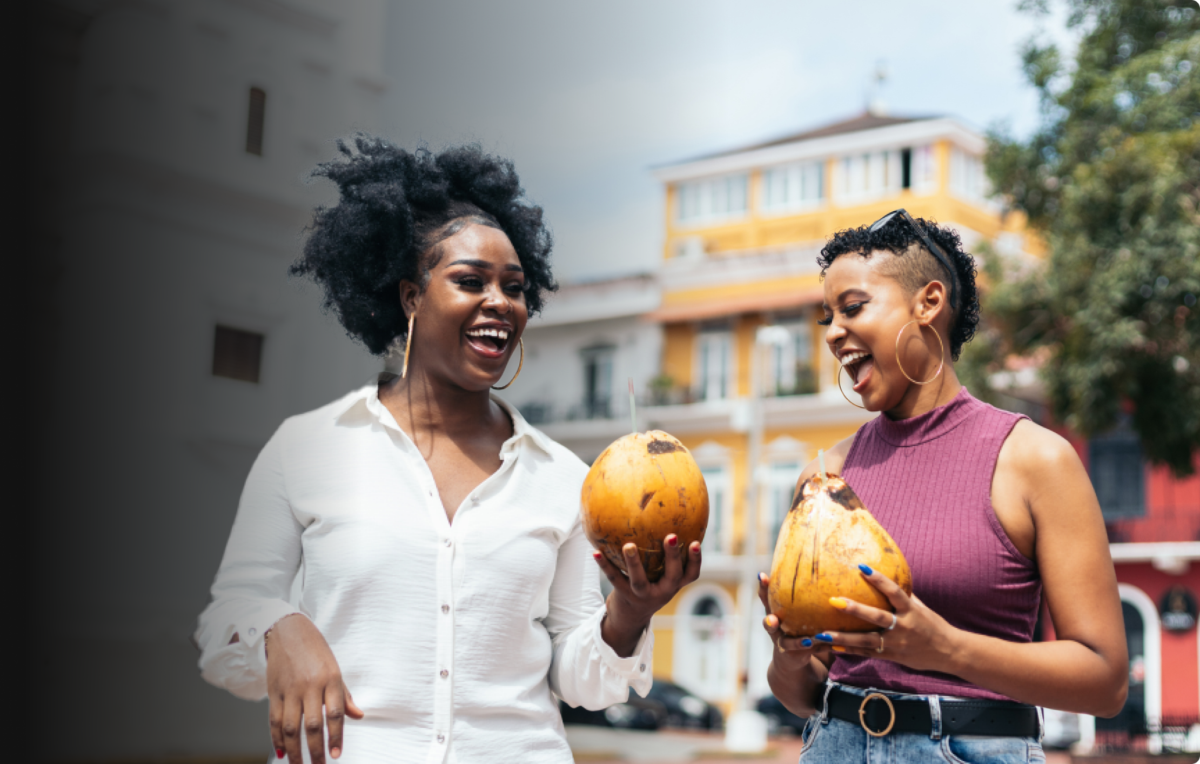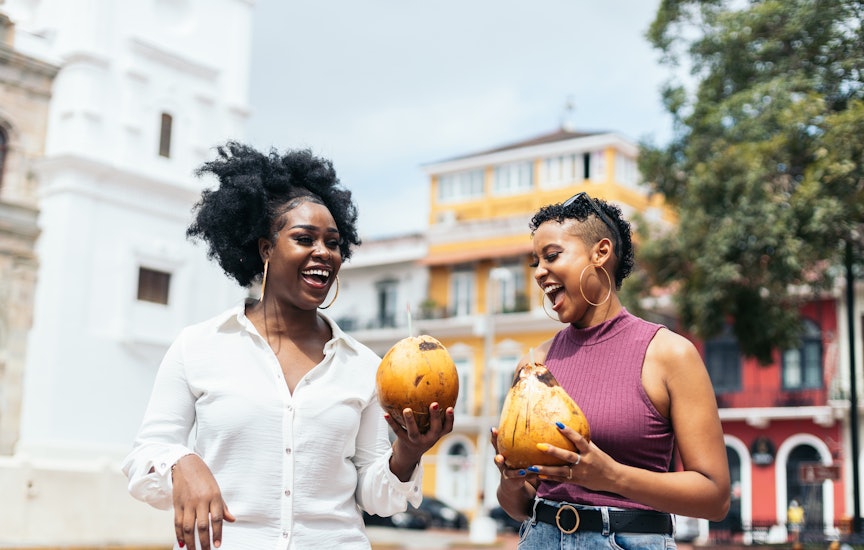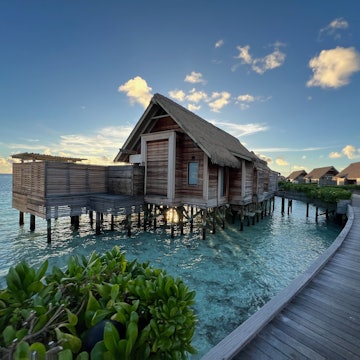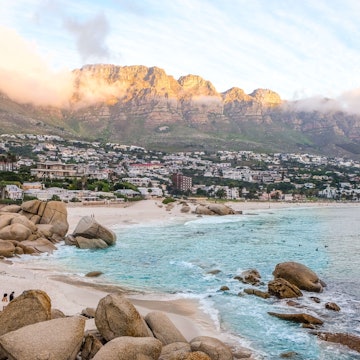

Taking a road trip in Botswana is a challenge – and a thrill © tonyzhao120 / Getty Images
Flying in for a few nights at a splendid luxury lodge is a marvelous way to see the remote corners of beautiful Botswana, but to truly enjoy this country’s monumentally wild spirit, it’s all about taking to the open road.
Whether you’re road-tripping by 4WD or in a smaller sedan, a self-driving expedition through national parks and game-rich reserves will transform your vacation into a dizzying adventure, allowing you to take in many of the best things to do in the country.
Traveling by car allows precious freedom to camp wild in the Okavango Delta as the safari pioneers once did, or sit with the 100-strong elephant herds of Chobe National Park for as many hours as you please. Take underrated back routes to discover Botswana’s hidden treasures, such as sacred waterfalls and San art studios unreachable by regular flight routes, or even hunt down that flawless landscape photograph in the Kalahari Desert while keeping to your own schedule.
From a classic self-drive camping adventure to sedan-friendly tarmac treks to an engaging artisan route through the quieter corners of the Kalahari, here are eight of the best road trips to take in Botswana.

1. The classic Botswana road trip
A wild camping circuit for adventurers
Maun–Chobe; 450km (280 miles); allow 7 days
Accessible only by 4WD vehicles, this road trip isn’t for the faint of heart. One of Botswana’s most iconic itineraries, this famous self-drive circuit starts in Maun and leads north to the wild heart of the country for an immersive off-the-grid safari. Stock up on plenty of fuel, water, firewood and food, then wave goodbye to the donkeys, dogs and goats that freely roam Maun’s rural outskirts. Crossing the veterinary boundary (often referred to as the “buffalo fence”) – which prevents diseases from passing between domestic and wild animals – marks the start of this extraordinary adventure. From here, you could bump into a mischievous elephant at any moment, or get bogged down in the severe sand tracks.
Camping at Third Bridge in Moremi Game Reserve or at a community-run campsite in the neighboring Khwai Community Concession provides ample opportunity to meet the swamp’s residents, such as the wading red lechwe antelope or hippos harrumphing in the twisting lagoons within the Okavango Delta. The route then veers north to the dynamic Savuti marsh, home to legendary lion prides, and ends at the Chobe River in Chobe National Park.
Detour: While at Third Bridge, take an early morning drive around Mboma Loop and do a mokoro (canoe) trip from Mboma Boat Station (if you're tight on time, you can also do a trip from Khwai Community). The grassy savannah of this 100-sq-km island, a long extension of the Mopane Tongue, contrasts sharply with the surrounding landscapes and provides some excellent dry-season wildlife watching – cheetah, lion and buffalo sightings are reasonably common.
2. Bucket-list Botswana
Best way to see the Big Five
Serowe–Chobe; 1200km (745 miles); allow 10 days
Roll down the windows and get the camera ready: this road trip takes in the best sights of Botswana, combining the wildlife encounters of the Okavango Delta and Chobe National Park with the expansive landscapes of the Makgadikgadi Salt Pans. Start with a walking safari to seek out the gigantic rhino residents of the Khama Rhino Sanctuary, then detour into the pans via Letlhakane for a night below the Milky Way at Kubu Island. Die-hard photographers will relish the craggy baobab tree silhouettes during golden hour, followed by impressive, astrophotography opportunities after dark.
Across the A3 highway lies the underrated Nxai Pan National Park, home to the clustering Baines’ Baobabs plus the longest mammal migration in southern Africa (which is best visited in summer). Continue to Maun and shift north to commence the classic 4WD route that crisscrosses the Okavango Delta, Savuti and Chobe, as you pursue the remaining four of the Big Five. Your chances of seeing lions, leopards, elephants and buffalo will be excellent in these areas.
Detour: History buffs and culture enthusiasts will appreciate visiting the old Victorian building that houses the Khama III Memorial Museum in Serowe. With a passionate museum companion, artifacts and exhibits come to life as these keepers outline the Ba-ma-Ngwato histories from the time and life of Kgosi-Tona Khama III.

3. The tar-road checklist
Best for families and time-strapped budget travelers
Maun–Chobe; 680km (425 miles); allow at least 10 days
Stick to closer-in campsites on this self-drive safari to minimize hazard-related stress. Bouncing between the accessible and reasonably priced lodges on the paved A3 and A33 highways, you will still find memorable wildlife encounters. After an overnight mokoro in Maun with Delta Rain, steer your sedan towards Nata. (The A3 route is notorious for its patchwork of potholes, so set aside extra driving time and take it easy.) Soon, you’ll be mingling with the meerkats of the Makgadikgadi Pans during a stay at Planet Baobab.
Push on to Nata Lodge for a guided trip to the Nata Bird Sanctuary, where the chances of seeing zebra, wildebeest and ostriches are virtually guaranteed among the golden grasslands. Depending on the season (in winter after good rains is usually best), thousands of flamingos settle down to breed on the salt pans during their migration route. From Nata, it’s a simple drive north to Kasane – though you must keep your eyes peeled for elephants crossing the road. Countless operators and riverfront lodges provide sunset boat cruises and early-morning game drives to savor the fauna and flora of Chobe National Park.
Planning tip: If you don’t have the right car, you can still experience the thrills of camping in the wild with an operator like Kalahari Tours which offers an overnight camp-out. You’ll return from game drives to find fires blazing, delicious meals ready to devour, and comfy stretchers set up for sleeping in the middle of the Chobe National Park; a perfect setting for toasting to a full moon.
4. A Kalahari cruise
Best for getting far away from the crowds
Nata–D’kar; 800km (500 miles); allow 8 days
Caper through the most isolated areas of Botswana, from the Makgadikgadi to the central Kalahari Desert, and discover unobscured skies, winding roads, isolated campsites, and a hefty dose of sandy off-road driving. This route follows in the footsteps of such Victorian explorers as David Livingstone and Thomas Baines as you head towards Nxai Pan National Park. Choose one of three spectacular campsites below the boughs of a towering baobab tree (stand three is the most private) at Baines’ Baobabs. This is the ideal springboard to the game-rich sprawl surrounding the waterholes near South Camp, a short 4WD drive north. You can also expect to see lions, giraffes, enormous elephant bulls and cheetahs – with far fewer crowds than in other parks.
Afterward, make like a zebra and follow the waters to the Boteti River near Rakops. This seasonal stream is a lifeline in the Kalahari; at certain times of the year, the water is deep enough to visit the vast herds of zebra and wildebeest via a boat-based safari. Inquire with lodges such as Boteti River Camp or Leroo-La-Tau. Next, the truly intrepid part of the journey begins. It was not until the late 1990s that the Central Kalahari Game Reserve (CKGR) opened to individual tourists.
Everywhere in the CKGR is off the beaten track, which is why self-drive adventurers love it so much. You’ll encounter few other vehicles – but many sightings of black-maned lions, cheetahs and such desert-adapted creatures as bat-eared foxes and caracals. Exit through Xade Gate, pop into D’kar, and finish with a cultural stop at Kuru Art Project.
Planning tip: Only seasoned and knowledgeable adventurers with well-equipped 4WDs should attempt to drive themselves into the central Kalahari. Those doing so should travel in a minimum of two 4WD vehicles, with a contingency plan for receiving assistance in case of an emergency.

5. Off-beat backtracking
Best for discovering waterfalls
Tsabong–Goo-Moremi Gorge; 850km (530 miles); allow 5 days
Starting in Tsabong, this road trip from west to east in the southernmost section of Botswana lets you soak in the landscapes of this big-sky country. Visit the quirky Tsabong Eco-Tourism Camel Park for camel riding or indulge in quad biking over the Kalahari sands. Skirt the border of South Africa, then stop over in culture-packed Gaborone for shopping or karaoke before countering the arid desert landscapes with a walk to the cherished waterfalls of Goo-Moremi Gorge in the Tswapong Hills, which is considered a holy realm of badimo (ancestors).
6. The mighty Mosi-oa-Tunya excursion
Best for adrenaline-seekers
Kasane–Victoria Falls; 100km (65 miles); allow 2 days
A fantastic year-round wildlife destination, Chobe National Park is one of Africa’s most accessible safari spots. Fly into Kasane International Airport, rent a car and find extraordinary wildlife nearby – only a 10-minute drive from Boeing to the bush. Along the Sedudu riverfront, admire buffalo herds, endless elephant parades and hippos chewing on the soft grass at the river’s edge...before doing it all again on a sedate sundowner boat cruise.
From Kasane, it’s a short hop across the border to Livingstone in Zambia or Victoria Falls in Zimbabwe to feel the spray of mighty Mosi-oa-Tunya. (The name for the falls in the local Tonga language translates to “the smoke that thunders.”) Adrenaline nuts will adore the high-stakes activities available in this adventure hub. Get your heart pumping with Class V whitewater rafting, daring helicopter tours and zip-line rides, before finally capping off your visit with a bungee dive off the Victoria Falls bridge.

7. The Okavango panhandle pilgrimage
Best for active explorers
Maun–Maun; 400km (250 miles); allow 5 days
This trip takes in Botswana’s two Unesco World Heritage Sites, the western fringes of the Okavango Delta, traditional villages and the ancient Tsodilo Hills. Because the area doesn’t boom with wildlife, this thoroughfare between Namibia and Maun is rarely visited. The lousy road doesn’t help, either: the stretch from Maun to Sehitwa is in working condition, but the pavement disintegrates closer to Gumare on the A35. Those who make the journey, however, will be rewarded with cultural insights, a look at traditional rural life, fantastic fishing grounds, and excellent hiking trails.
Various camps and lodges provide access to the Okavango River. You’ll find the best fishing guides at the renowned Nxamaseri Island Lodge or Guma Lagoon Camp, as anglers line up for the chance to hook a feisty tigerfish. Enjoy a few days on the water, then nose the car in the opposite direction toward the highest point of Botswana. Human history stretches back 100,000 years in the sacred Tsodilo Hills, and rock art left by skilled shamans illuminates ancient ways of life where locals hunted the zebra for their dinner. All tours are led by residents from the tiny nearby village of Tsodilo, and several walking routes wind their way past impressive painted portals to the past. The Male Hill summit is also a bona-fide hike that you won’t want to miss out on.
Planning tip: Find a guide at the Tsodilo Hills Museum near the base of the hills and arrive early to avoid the heat. Wear comfortable shoes, bring a hat, sunscreen and water. Winter is a more accommodating time to summit the exposed Male Hill, and payment must be made in cash, where guides typically expect (and 100% deserve) a tip of at least US$10.
8. The unofficial artists’ route
Best for history and culture
Gaborone–Maun; 1600km (995 miles); allow 6 days
While Botswana is most associated with epic game viewing, this artisanally inclined road trip lets you encounter the talents of a culture-rich nation. This long-haul journey takes in an enormous span of culture across the country’s dominant clans and is best covered in bite-sized chunks (of roughly 300 miles between each destination) over a week. Start the adventure in urban Gaborone as you peruse the Botswanacraft shop for memorable souvenirs. It’s then just under an hour’s drive on paved roads from to Gabane and Thamaga, where you’ll fall in love with pretty backroad pottery workshops during a lesson that involves creating with traditionally harvested clay.
Proceed north to D’kar to sit with the celebrated San artists at the Kuru Art Project, where colorful masterpieces (think portraits of pangolins painted in a swish of dots, crescents and swirls) bring to life stories of the Naro San tribe. From D’kar, it’s a straightforward drive north towards Maun to discover how heritage gets woven into patterns during a laid-back lesson from the experienced artisans of Matlapana Quality Baskets. The primary producers of these baskets are the women of the Bayei and Hambukushu tribes from northwestern Botswana, and their ancestry endures at your last stop: Tsodilo Hills.
Though we admire rock paintings as works of art today, these are much more than mere pictures. Shamans hand-painted a staggering 4500 images onto strategic crevices and overhangs in these hills, providing a remarkable visual record at a site revered today as the “Mountain of the Gods.”
Tips for driving in Botswana
Drive with extreme caution in Botswana. Stubborn donkeys, goats, cattle, elephants and ostriches cross the roads at will. We strongly recommend not driving at night.
Veterinary fences have been erected to separate domestic animals from wildlife to prevent the spread of disease. You cannot transport animal products or some fruits and vegetables from wilderness areas (mainly in the north) to rural areas (mostly in the south), and every vehicle is subsequently subject to inspection.
Don’t underestimate the challenge of driving through Botswana’s national parks and game reserves, either. If you’re behind the wheel yourself, check whether your desired route requires a 4WD vehicle. Carefully research seasonal road conditions ahead of time: motorists will have to tackle bumpy sand trails and seasonal water crossings in a fully equipped 4WD car. These vehicles are typically rigged up with rooftop tents and gear such as a battery-powered fridge to help your food supplies last the week. Rent them from companies such as Bushtrackers Africa (which has a recovery base and office in Maun); expect to pay roughly US$150 per day.
You might encounter flooding along some access routes, such as those leading to the Third Bridge campsite, while roads in Savuti become impassable after rains that transform the tracks into squelchy mud pits.
Buy a paper atlas or download the Tracks4Africa app. These maps will be the most accurate over a given distance for off-road routes, and they work offline on your mobile phone. It’s best to have cash in pula, the Botswana currency, to cover permit fees at the remote national park entrance gates, and to print out proof of campsite confirmations (tip: be sure to reserve in advance).
Stock up and pack enough water, firewood, toilet paper and any other equipment you may need to be self-sufficient when camping in the wilderness areas. And, most importantly: have fun!
















